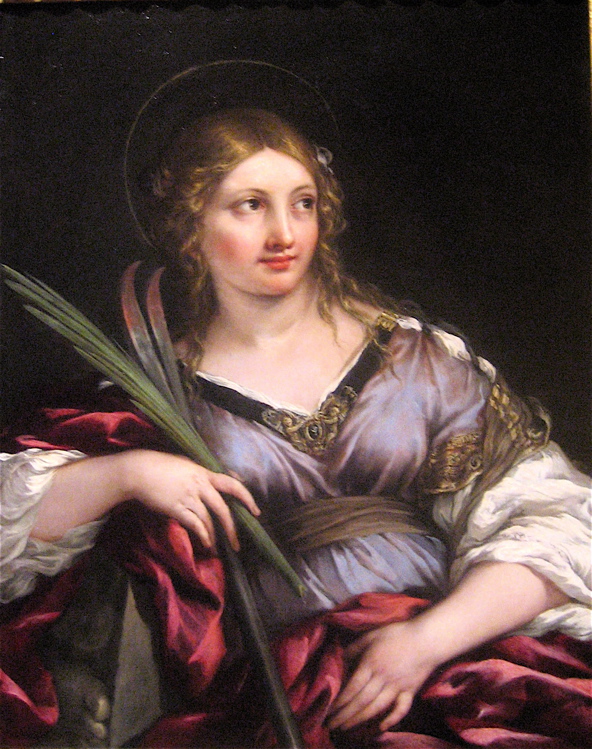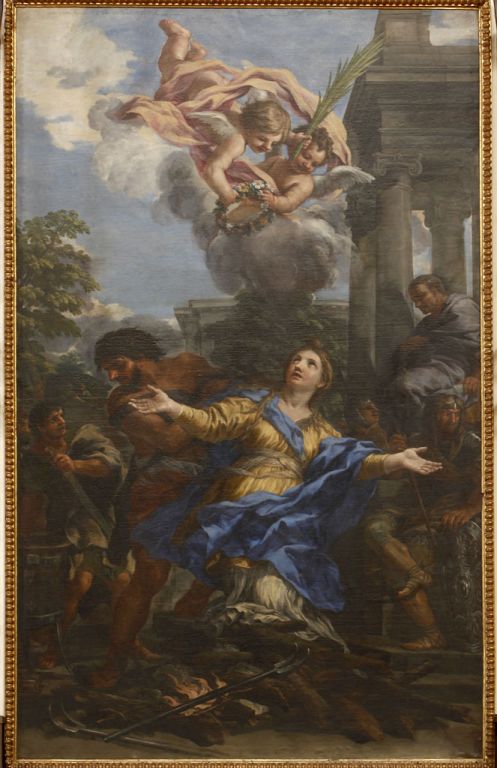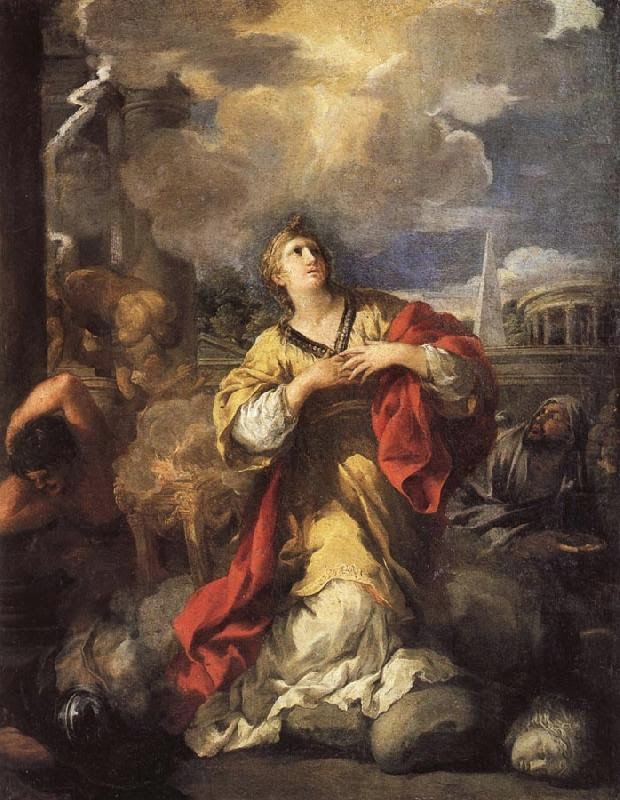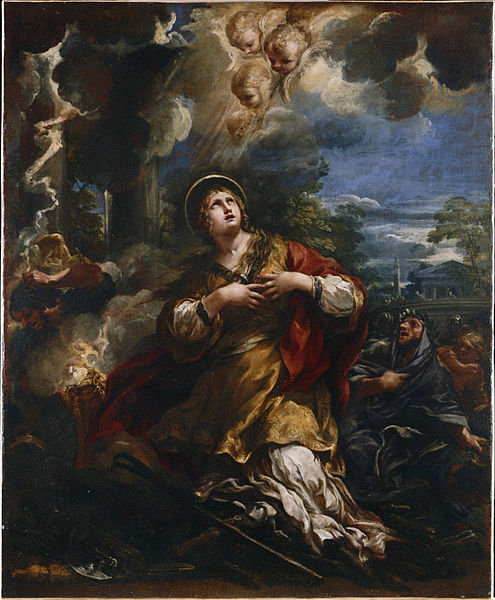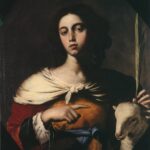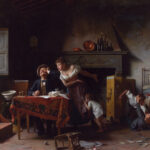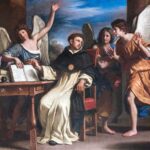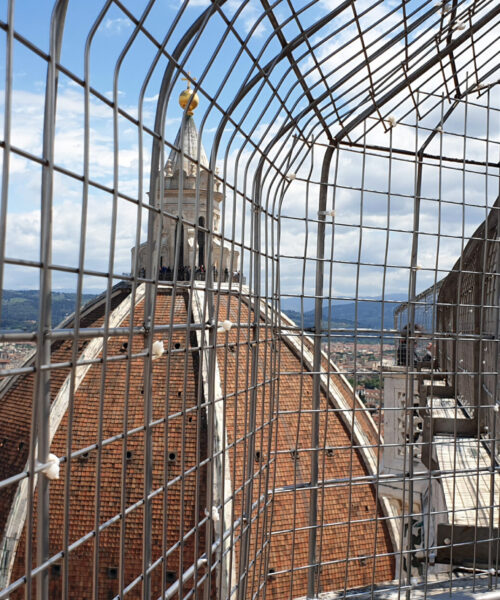The figure of Saint Martina, the patron saint of Rome, is commemorated on January 30th, in a blend of history, legend, and art, evoking the power of faith and unshakable resilience in the face of the most extreme adversities. Chronicles tell that Martina, the daughter of a Roman consul, fervently embraced Christianity, thus challenging the pagan order of the time.
Legend has it that Martina, accused of causing the destruction of pagan idols and temples, endured unspeakably cruel tortures, miraculously resisting every attempt to break her faith, before ultimately being decapitated. This tale, besides reflecting the drama of martyrdom, underscores the resilience and inner strength of this saint, becoming a source of inspiration for generations.
In iconography, Saint Martina is often depicted with elements that highlight her purity and sacrifice. The lily, a symbol of candor and innocence, and the palm, emblematic of martyrdom, are accompanied by objects like hooked tongs and the sword, instruments of her suffering and tragic end. Her images vary from symbolic portraits, focusing more on distinctive attributes than physical likeness, to narrative scenes depicting crucial moments of her life, such as her refusal to worship idols and their subsequent destruction, or episodes of her martyrdom.
Among the artists who immortalized Saint Martina is Pietro Berrettini, better known as Pietro da Cortona (1596-1669), whose Baroque style skillfully captured the tension and pathos of sacred scenes. Notably, his works include “Saint Martina” (Los Angeles County Museum of Art), “Martyrdom of Saint Martina” (1655, Basilica of San Francesco, Siena), and “Saint Martina Refuses to Worship Idols” (1655-1656, Palazzo Pitti, Galleria Palatina and Appartamenti Reali, Florence). This last piece was later replicated in a copy (1655-1699, Dulwich Picture Gallery, London) by an anonymous artist.
In these works, Pietro da Cortona’s expressive strength is evident in the vibrancy of color and the dynamics of form, creating an emotional tension that immerses the observer in the depths of the narrative. The interplay of light and shadow, the movement of figures, and the intensity of the gazes lend these scenes a dramatic power that transcends mere hagiographic storytelling, reaching a universal dimension that speaks of faith, courage, and human resilience.
Ultimately, the figure of Saint Martina and her artistic representations stand as a paradigmatic example of how art can transcend the boundaries of the sacred to touch deep chords of the human soul, offering insights into the meaning of faith, suffering, and sacrifice.

